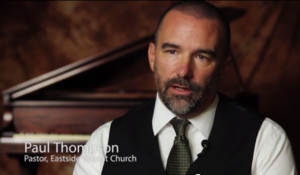(Book Review of “Autopsy of a Deceased Church” part 5. Part 1 and Part 2 and Part 3 and Part 4)
Final review/critique of Autopsy of a Deceased Church, by Thom Rainer.
I appreciate that Thom Rainer offers a book that looks at some serious issue churches face.
These final three chapters seem to be written from a sincere desire to help churches be restored to good health. Let me offer my review/critique to his twelve responses to churches that may have symptoms of sickness.
Rainer divides his twelve responses into three categories of churches: churches that have symptoms of sickness (40%); very sick churches (40%); and dying churches (10%). It is Rainer’s opinion that there may only be 10% of churches that are healthy. If this is accurate, then there is reason for alarm.
Chapter 12: My Church Has Symptoms of Sickness: Four Responses
First, This may be the shortest chapter in the entire short book. The shortness of attention should not reflect the seriousness of the matter. Rainer supposes that there may be over 150,000 churches that fit this category. WOW.
Here is where I have to listen to the author with care. And I urge other pastors to do the same.
I would likely be the guys this chapter is talking about. I do realize that numbers tell a story. Often, Christian publishing houses produce statistics that, admittedly, are complicated to decrepit. And if pastors use the statistics, we are often chided for misusing them. This is a love/hate relationship I have with numbers. Do these statistics represent facts? Do these numbers represent health?
I can tell you from pastoring this church for over 13 years that there were days when we had to have two worship services on Sunday morning and our Wednesday night attendance was something to brag about. And unfortunately I did. But when I examine those days, I will actually argue that the church was less healthy. Not because of the numbers of people who where here, but because we were more driven by agendas and programs of men than the sufficiency of Christ and his word.
I don’t think Rainer is trying to make an argument that numbers reflect health; but I do think that a pastor reading this book, wanting to faithfully lead his church will read this book and interpret that attendance and numerical growth equals health. It may… but it doesn’t simply mean that.
Rainer does note that the kinds of programs and ministries may be showing the local church that she has become self-centered and a lack of ministry or programs for the community could show unhealthiness. But where do churches get the ideas for their programs they offer or ministries they do? Usually from a publishing house order form, a publishing house mailer, a publishing house sponsored conference with a product to sell.
I don’t mean to imply what my frankness may be saying.
Rainer’s four responses to these churches is helpful.
- Pray that God will open the eyes of the leadership and members for opportunities to reach into the community where the church is located.
- Take an honest audit of how church members spend their time being involved.
- Take an audit of how the church spends its money.
- Make specific plans to minister and to evangelize your community.
I believe these are four helpful responses. I intend to do hear and do.
Chapter 13: My Church is Very Sick: Four Responses
In his research, Rainer argues, and I agree, that rarely does a church move from being a church with symptoms of sickness to being very sick overnight. This process is likely very similar to the human body.
There are indicators that a church is becoming very sick and will eventually suffer greatly if the sickness is not dealt with.
Shockingly, Rainer estimates that there are over 150,000 churches. (here is some of that statistical data that pastors will begin to uses and somewhere down the road may be accused of misinterpreting the numbers.) 150,000 very sick churches? WOW! Should there be an alarm going off somewhere? That’s almost unbelievable. If this is true, then the condition of the church is worse that it appears.
I’m not happy with the reporting of information in this chapter at all.
(More information about numbers as the sign. I get it. It may be an indicator. But is it the standard? We know better. We have bibles, we see that our message is less desired today than ever before. There is a sickness, but is the sickness not our incurable desire to attract a large crowd?)
And yet, I appreciate his four responses:
- Admit and confess the dire situation.
- The church must pray for wisdom and strength to do whatever is necessary. (I argue that repentance is in order not simply changing something)
- The church must be willing to change radically. (as a result of repentance, turn from the spirit of this age and to the Spirit of God)
- That change must lead to action and an outward focus.
I get it. There is a serious problem, sickness. I couldn’t agree more at this point, but I disagree with the implications that the language used will communicate what I think Rainer knows to be true. I don’t know Thom Rainer personally. I have every reason to believe he is sincere in his desire for healthy churches.

